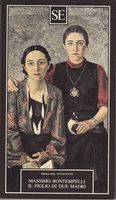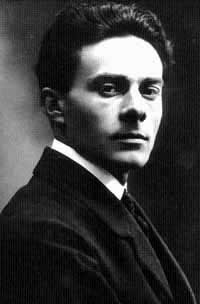
Author

Massimo Bontempelli was an Italian novelist, short story and theater writer, literary and art theorist and critic. Best known for coining the literary term Magical Realism and creating its theoretical framework. His efforts to implement this specific poetics in his writings begin after his initial experiments, first with traditional poetry (Carduccian classicism), then humorist, ironic stories (influenced by Pirandello) and short escapades in surrealism and futurism. Despite forming a literary model for Magic Realism with his own novels and short stories, Bontempelli's importance as a Magic Realist writer is mainly neglected and overthrown in contemporary theories on Magic Realism. Only few authors (mostly Italian authors but A. C. Hegerfeldt, A. B. Chanady, I. Guenther as well) acknowledge Bontempelli's significant role for the development of Magic Realism, but unfortunately, not all of them manage to go further then Franz Roh's and Alejo Carpentier's theories in the debate over the origin and literary use of the term. Bontempelli graduated from the University of Turin gaining two diplomas, in Classical Studies and in Philosophy. He worked as a journalist, teacher and served as an artillery officer during the First World War. In 1924 Bontempelli entered Mussolini's fascist movement and in the same year, together with his friend Luigi Pirandello, he founded Teatro degli Undici. In 1926, co-founded the literary review 900: Cahiers d'Italie en d'Europe with Curzio Malaparte. Despite Malaparte's abandoning the review even before the first issue was published, Bontempelli had succeeded, with the help of Nino Frank, to form an impressive editorial committee which included Max Jacob, André Malraux, Rainer Maria Rilke, and James Joyce and contributions from Pierre Mac Orlan, Philippe Soupault, Georg Kaiser, Ivan Goll and Ramòn Gomez de la Serna. In the first issue Bontempelli presented his theory of Novecentismo and Magic Realism and articulated literary positions that became points of reference in literature. In 1930 Bontempelli becomes a member of the Italian Academy. In 1938 Bontempelli was offered Attilio Momigliano' chair at the department for Italian Literature at the Florence University (which Momigliano was forced to give up because of the anti-Semitic legislation) but refused the position and was subsequently banished to Venice and censored by the regime because of his critic towards fascist leaders. In 1953 Massimo Bontempelli is awarded with Italy's highest literary award, the Strega Prize, for his collection of short stories L'amante fedele (The Faithful Lover).